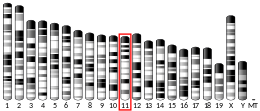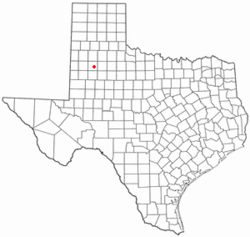XBP1
XBP1XBP1로도 알려진 X박스 결합 단백질 1은 XBP1 [5][6]유전자에 의해 사람에게서 암호화되는 단백질이다.XBP1 유전자는 염색체 22에 위치하는 반면, 밀접하게 관련된 유사 유전자는 확인되고 염색체 [7]5에 국소화 되었다.XBP1 단백질은 면역 시스템의 적절한 기능과 세포 스트레스 반응에 [8]중요한 유전자의 발현을 조절하는 전사 인자입니다.
검출
X박스 결합 단백질 1(XBP1)은 bZIP 도메인을 포함하는 전사 인자입니다.그것은 인간 백혈구 항원(HLA) DR [6]알파의 프로모터에서 보존된 전사 요소인 Xbox에 결합하는 능력으로 처음 확인되었다.
기능.
MHC클래스II유전자조절
이 단백질의 발현은 클래스 II 주요 조직적합성 [9]유전자의 하위 집합의 전사에 필요하다.또한 XBP1은 c-fos [9]등의 다른 bZIP 전사인자와 헤테로다이머화한다.
XBP1 발현은 사이토카인 IL-4에 의해 제어되며 항체 IGHM.[10] XBP1은 혈장세포의 성장을 촉진하는 IL-6의 발현과 B림프구의 [10]면역글로불린의 발현을 제어한다.
플라즈마 세포 분화
XBP1은 또한 혈장 세포(면역 세포를 [10]분비하는 항체의 일종)의 분화에 필수적이다.이러한 분화는 XBP1의 발현뿐만 아니라 XBP1의 스플라이스드 아이소폼의 발현을 필요로 하며, XBP1은 소포체 스트레스 반응에서 알려진 기능과 무관하게 혈장 세포 분화를 조절한다(아래 [11]참조).XBP1의 정상적인 발현 없이 두 개의 중요한 혈장 세포 분화 관련 유전자 IRF4와 Blimp1이 잘못 조절되어 XBP1 결핍 혈장 세포는 골수에서 오래 지속되는 틈새를 군집화하지 못하고 항체 [11]분비를 유지하지 못한다.
호산구 분화
호산구 분화에 XBP1이 필요하다.XBP1이 결핍된 호산구는 [12]과립단백질에서 결함을 보인다.
혈관신생성
XBP1은 성장인자 [13]경로를 통해 내피세포 증식을 조절하여 혈관신생을 유도한다.또한 XBP1은 HDAC3와 [14]상호작용하여 산화 스트레스로부터 내피세포를 보호한다.
바이러스 리플리케이션
이 단백질은 또한 인간 T림프트로픽 바이러스 [15]1의 프로모터에서 인핸서에 결합하는 세포전사인자로 확인되었다.혈장 세포 분화 중 XBP1s의 생성은 또한 카포시 육종 관련 헤르페스 바이러스와 대기 시간으로부터의 엡스타인 바 바이러스 재활성화의 신호인 것으로 보인다.
소포체 스트레스 반응
XBP1은 소포체 스트레스 반응인 전개단백질 반응(UPR)[10]의 일부이다.ER 용량을 초과하는 상태는 ER 스트레스를 유발하고 전개 단백질 응답(UPR)을 트리거합니다.그 결과, IRE1로부터 GRP78이 방출되어 단백질 [16]접힘을 지지한다.IRE1은 자가인산화(self)를 통해 리보핵산가수분해효소 도메인을 올리고머화하고 활성화한다.활성 IRE1은 기계적으로 pre-tRNA 스플라이싱과 유사한 방법으로 보편적으로 발현되는 XBP1u mRNA에서 26 뉴클레오티드 비재래식 인트론의 절제를 촉매한다.이 인트론의 제거는 XBP1 부호화 배열의 프레임 이동을 유발하여 261 아미노산, 33kDa, XBP1u 이소형이 아닌 376 아미노산, 40kDa, XBP-1s 이소형이 번역된다.또한 XBP1u/XBP1s 비율(XBP1-unspliced/XBP1-spliced 비율)은 ER의 접힘 용량을 각각의 [17]요건에 적응시키기 위해 발현 단백질의 발현 수준과 상관한다.
임상적 의의
XBP1의 이상은 ER 스트레스를 증가시키고, 그 후 알츠하이머병의 [18]원인이 될 수 있는 염증 과정에 대한 감수성을 증가시킨다.결장에서 XBP1 이상은 크론병과 [19]관련이 있다.
XBP1의 프로모터 영역에서 단일 뉴클레오티드 다형성 C116G가 성격 특성과의 가능한 연관성을 검사했다.아무것도 [20]발견되지 않았다.
상호 작용
XBP1은 에스트로겐 수용체 [21]알파와 상호작용하는 것으로 나타났다.
「 」를 참조해 주세요.
레퍼런스
- ^ a b c GRCh38: 앙상블 릴리즈 89: ENSG00000100219 - 앙상블, 2017년 5월
- ^ a b c GRCm38: 앙상블 릴리즈 89: ENSMUSG000020484 - 앙상블, 2017년 5월
- ^ "Human PubMed Reference:". National Center for Biotechnology Information, U.S. National Library of Medicine.
- ^ "Mouse PubMed Reference:". National Center for Biotechnology Information, U.S. National Library of Medicine.
- ^ "Entrez Gene: XBP1 X-box binding protein 1".
- ^ a b Liou HC, Boothby MR, Finn PW, Davidon R, Nabavi N, Zeleznik-Le NJ, Ting JP, Glimcher LH (March 1990). "A new member of the leucine zipper class of proteins that binds to the HLA DR alpha promoter". Science. 247 (4950): 1581–4. Bibcode:1990Sci...247.1581L. doi:10.1126/science.2321018. PMID 2321018.
- ^ Liou HC, Eddy R, Shows T, Lisowska-Grospierre B, Griscelli C, Doyle C, Mannhalter J, Eibl M, Glimcher LH (1991). "An HLA-DR alpha promoter DNA-binding protein is expressed ubiquitously and maps to human chromosomes 22 and 5". Immunogenetics. 34 (5): 286–92. doi:10.1007/BF00211992. PMID 1718857. S2CID 2939108.
- ^ Yoshida H, Nadanaka S, Sato R, Mori K (2006). "XBP1 is critical to protect cells from endoplasmic reticulum stress: evidence from Site-2 protease-deficient Chinese hamster ovary cells". Cell Structure and Function. 31 (2): 117–25. doi:10.1247/csf.06016. PMID 17110785.
- ^ a b Ono SJ, Liou HC, Davidon R, Strominger JL, Glimcher LH (May 1991). "Human X-box-binding protein 1 is required for the transcription of a subset of human class II major histocompatibility genes and forms a heterodimer with c-fos". Proceedings of the National Academy of Sciences of the United States of America. 88 (10): 4309–12. Bibcode:1991PNAS...88.4309O. doi:10.1073/pnas.88.10.4309. PMC 51648. PMID 1903538.
- ^ a b c d Iwakoshi NN, Lee AH, Vallabhajosyula P, Otipoby KL, Rajewsky K, Glimcher LH (April 2003). "Plasma cell differentiation and the unfolded protein response intersect at the transcription factor XBP-1". Nature Immunology. 4 (4): 321–9. doi:10.1038/ni907. PMID 12612580. S2CID 20161577.
- ^ a b Hu CC, Dougan SK, McGehee AM, Love JC, Ploegh HL (June 2009). "XBP-1 regulates signal transduction, transcription factors and bone marrow colonization in B cells" (PDF). The EMBO Journal. 28 (11): 1624–36. doi:10.1038/emboj.2009.117. PMC 2684024. PMID 19407814.
- ^ Bettigole SE, Lis R, Adoro S, Lee AH, Spencer LA, Weller PF, Glimcher LH (August 2015). "The transcription factor XBP1 is selectively required for eosinophil differentiation". Nature Immunology. 16 (8): 829–37. doi:10.1038/ni.3225. PMC 4577297. PMID 26147683.
- ^ Zeng L, Xiao Q, Chen M, Margariti A, Martin D, Ivetic A, Xu H, Mason J, Wang W, Cockerill G, Mori K, Li JY, Chien S, Hu Y, Xu Q (April 2013). "Vascular endothelial cell growth-activated XBP1 splicing in endothelial cells is crucial for angiogenesis". Circulation. 127 (16): 1712–22. doi:10.1161/CIRCULATIONAHA.112.001337. PMID 23529610.
- ^ Martin D, Li Y, Yang J, Wang G, Margariti A, Jiang Z, Yu H, Zampetaki A, Hu Y, Xu Q, Zeng L (October 2014). "Unspliced X-box-binding protein 1 (XBP1) protects endothelial cells from oxidative stress through interaction with histone deacetylase 3". The Journal of Biological Chemistry. 289 (44): 30625–34. doi:10.1074/jbc.M114.571984. PMC 4215241. PMID 25190803.
- ^ Ku, SC (2008). "XBP-1, a novel human T-lymphotropic virus type 1 (HTLV-1) tax binding protein, activates HTLV-1 basal and tax-activated transcription". J Virol. 82 (9): 4343–53. doi:10.1128/JVI.02054-07. PMC 2293026. PMID 18287238.
- ^ Kaufman RJ (May 1999). "Stress signaling from the lumen of the endoplasmic reticulum: coordination of gene transcriptional and translational controls". Genes & Development. 13 (10): 1211–33. doi:10.1101/gad.13.10.1211. PMID 10346810.
- ^ Kober L, Zehe C, Bode J (October 2012). "Development of a novel ER stress based selection system for the isolation of highly productive clones". Biotechnology and Bioengineering. 109 (10): 2599–611. doi:10.1002/bit.24527. PMID 22510960. S2CID 25858120.
- ^ Casas-Tinto S, Zhang Y, Sanchez-Garcia J, Gomez-Velazquez M, Rincon-Limas DE, Fernandez-Funez P (June 2011). "The ER stress factor XBP1s prevents amyloid-beta neurotoxicity". Human Molecular Genetics. 20 (11): 2144–60. doi:10.1093/hmg/ddr100. PMC 3090193. PMID 21389082.
- ^ Kaser A, Lee AH, Franke A, Glickman JN, Zeissig S, Tilg H, Nieuwenhuis EE, Higgins DE, Schreiber S, Glimcher LH, Blumberg RS (September 2008). "XBP1 links ER stress to intestinal inflammation and confers genetic risk for human inflammatory bowel disease". Cell. 134 (5): 743–56. doi:10.1016/j.cell.2008.07.021. PMC 2586148. PMID 18775308.
- ^ Kusumi I, Masui T, Kakiuchi C, Suzuki K, Akimoto T, Hashimoto R, Kunugi H, Kato T, Koyama T (December 2005). "Relationship between XBP1 genotype and personality traits assessed by TCI and NEO-FFI". Neuroscience Letters. 391 (1–2): 7–10. doi:10.1016/j.neulet.2005.08.023. hdl:2115/8420. PMID 16154272. S2CID 505223.
- ^ Ding L, Yan J, Zhu J, Zhong H, Lu Q, Wang Z, Huang C, Ye Q (September 2003). "Ligand-independent activation of estrogen receptor alpha by XBP-1". Nucleic Acids Research. 31 (18): 5266–74. doi:10.1093/nar/gkg731. PMC 203316. PMID 12954762.







